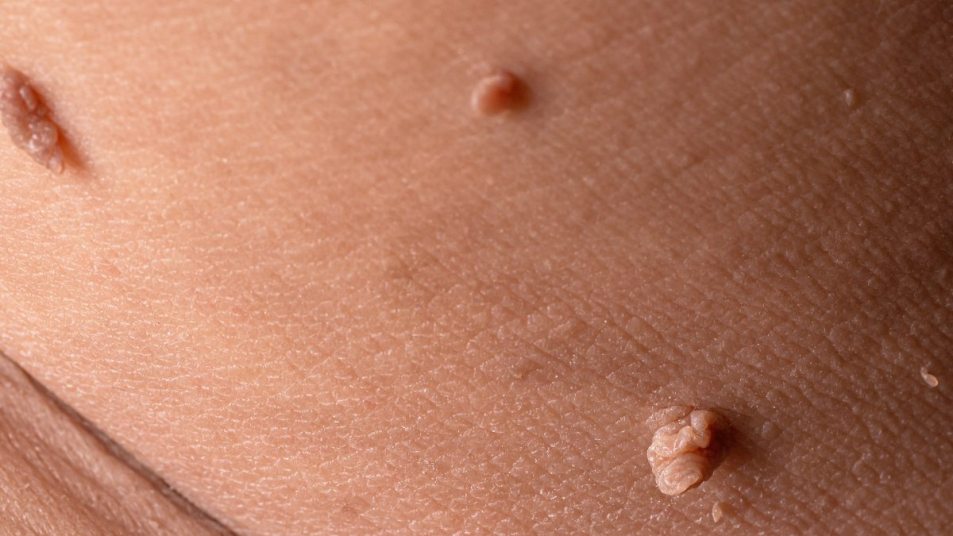Trying to Remove a Skin Tag at Home? Put Down the Clippers ASAP
At-home removal kits are tempting, but they're not the best route.

Skin tags are perfectly normal. These small, non-cancerous growths tend to grow in the folds of your skin (where skin cells rub together), and hang off the skin like tiny balloons. They can appear at any age but tend to form more frequently as we get older. While some of us pay them no mind, many of us want them gone.
There’s nothing wrong with wanting to remove your skin tags — but knowing the right way to do so is vital to maintaining the health of your skin. To answer your removal questions, we connected with Reid Maclellan, MD, Founder and CEO of Cortina and Morgana Colombo, MD, FAAD, and co-founder of Skintap. Here’s what they advised about at-home removal (and why you should avoid it!)
Is it safe to remove skin tags at home?
Using an at-home skin tag removal kit is tempting because it’s the cheaper option — but it’s also not the best idea.
“I would not recommend removing skin tags at home,” says Dr. Maclellan. “There are complications that could worsen if you take matters into your own hands. It may seem like a small skin tag or not something too serious, but doing it yourself could lead to infection — if you don’t sterilize or conduct aftercare properly — bleeding, and even scarring.”
Even worse, you may accidentally remove something that isn’t a skin tag. “An untrained person can mistakenly think they have a benign skin tag and instead have an atypical or cancerous skin lesion that is then improperly removed,” adds Dr. Colombo. “[It] may later even potentially metastasize to other parts of the body and become a much more serious problem.”
If someone insists on at-home removal, are there any methods or devices that you’d recommend?
“I would not recommend it,” Dr. Maclellan says simply. “Go to a trusted physician to remove your skin tags.”
“I don’t support at-home removal,” Dr. Colombo confirms.
The bottom line? No skin tag remover, be it a freezing serum or needle-like pen, is safe to use at home. In fact, the Food and Drug Administration (FDA) issued warning letters this month to Amazon, Ariella Naturals, and Justified Laboratories for selling drugs for skin tag and mole removal. The FDA argued that these companies are selling removal products that have not been evaluated by the FDA, even though they require the agency’s approval.
How will a medical professional remove a skin tag?
“For smaller skin tags, a professional would most likely locally anesthetize the area with a topical ointment and then excise the skin tag at the base,” Dr. Maclellan says. “For larger skin tags, other methods like cryotherapy or electrocauterization may be used. Sometimes these methods can cause hyperpigmentation though.”
Cryotherapy involves using an extreme source of cold to freeze and remove abnormal skin tissue. Electrocauterization is a form of surgery that uses an electrical current to burn or destroy skin tissue. “Electrocautery [and] cryotherapy are typically the least expensive methods of skin tag removal,” Dr. Colombo says.
Costs will vary depending on the provider, though one source estimates that skin tag removal costs $150 or less. “If removing a skin tag is medically necessary (getting in the way of your daily life) then insurance may cover the removal,” Dr. Maclellan notes. “Otherwise, you will have to pay out of pocket.”
Whether you decide to remove your skin tags or not, remember that safety comes first. A product that’s marketed online as a “safe option” may not actually be safe!












